Welcome to this introductory tutorial on how to search PsycINFO, the main database for Psychology.
To access PsycINFO, go to the Library Homepage and hover over the search icon at the top of the page.
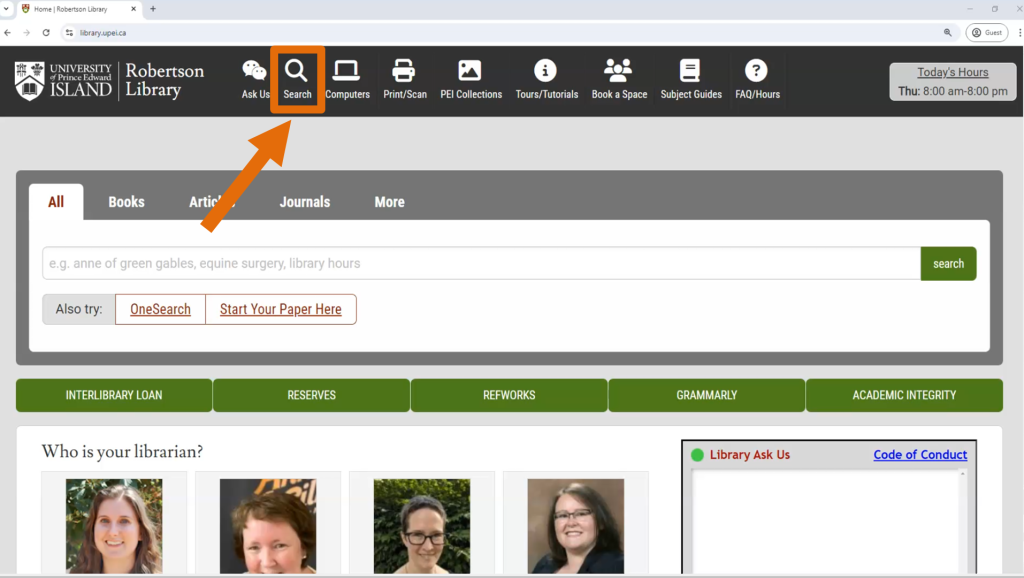
Then, select PsycINFO (Psychology) from the list of most popular search tools.
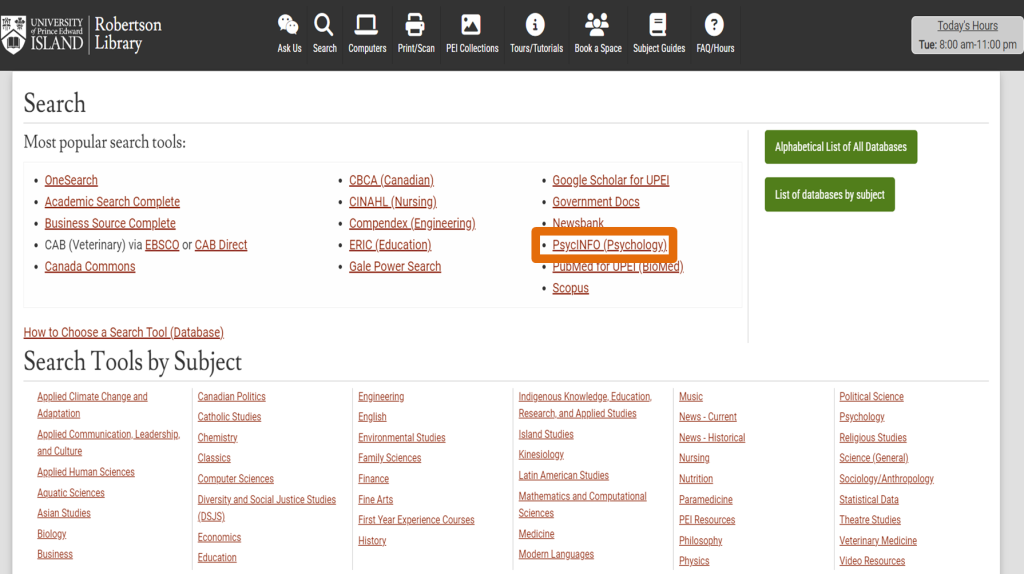
If you’re off campus, you will be asked to log in. Use your UPEI username and password to log in. This is the same username and password that you would use to access Moodle or your UPEI email.
If you are on campus, you should be taken directly to the Advanced Search page.
As an example, I’ll search for information on the topic “Does the rate of medication compliance change when older adults with depression participate in CBT?”
This question has four important elements. I’m interested in
● medication compliance
● by older adults
● who have depression
● if they participate in cognitive behaviour therapy, or CBT
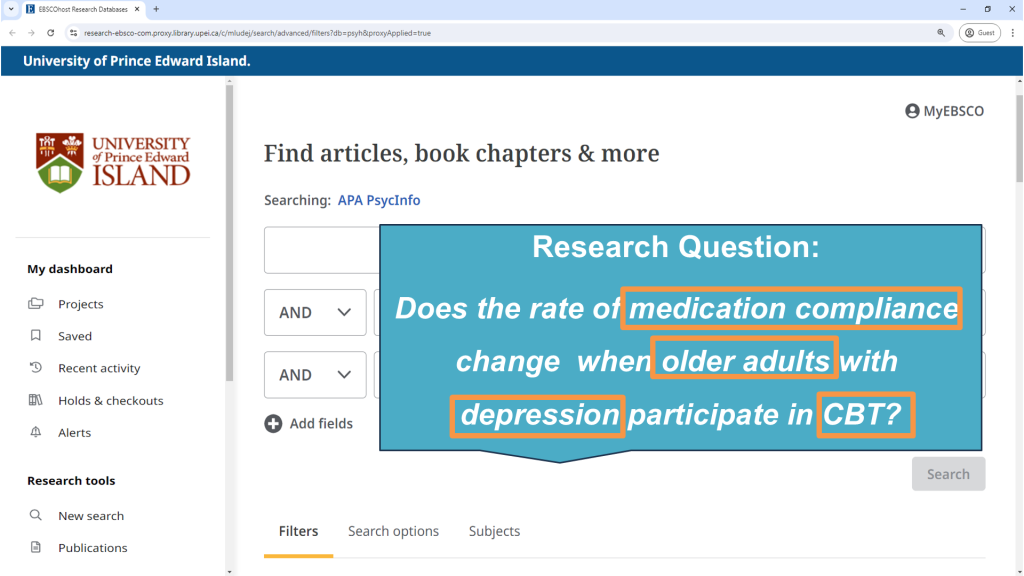
I can use PsycINFO’s built-in filters to focus on older adults. Under “Age Groups,” I’ll select Aged (65 yrs & older). If I wanted to add additional age groups, I could click on more of them and add them as options for my search.

That leaves me with three more concepts: medication compliance, depression, and CBT. I’m going to use one search box for each concept to help me organize them.
As I start typing “medication compliance” into the first box, I see suggestions of other terms. These may or may not be useful–you’ll need to use your own judgment.

One that sounds good to me is “medication adherence,” so I’m going to add that in the same box. Using “medication compliance” OR “medication adherence” tells PsycINFO that I’m interested in articles that use either term.
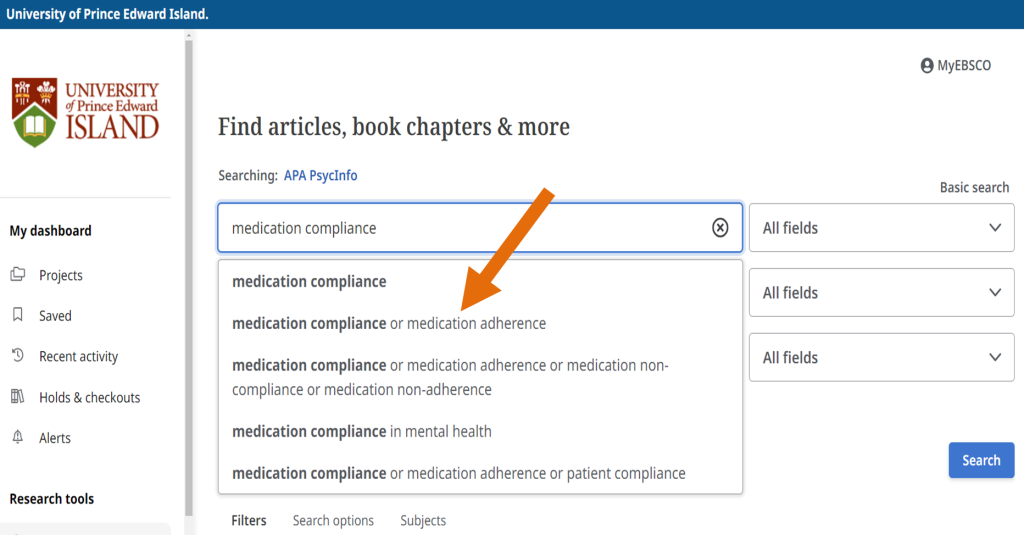
Notice also that I’m putting quotation marks around each term. This glues the words together so that I only see articles where they’re used as a phrase.
One other way to find search terms is to use the Subjects tab, which searches the APA Thesaurus of Psychological Index Terms. I’ll search for medication compliance and make sure the search is Relevancy Ranked.
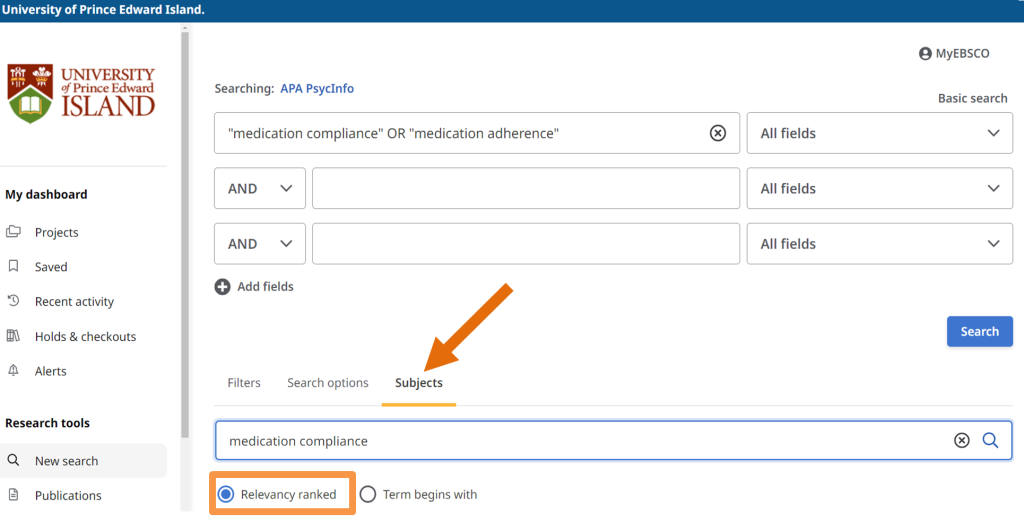
The first result is Treatment Compliance, which sounds useful. I can double-check by clicking on the down arrow to see a definition: “Adherence by a patient or client to professional advice or a systematic plan of treatment.”
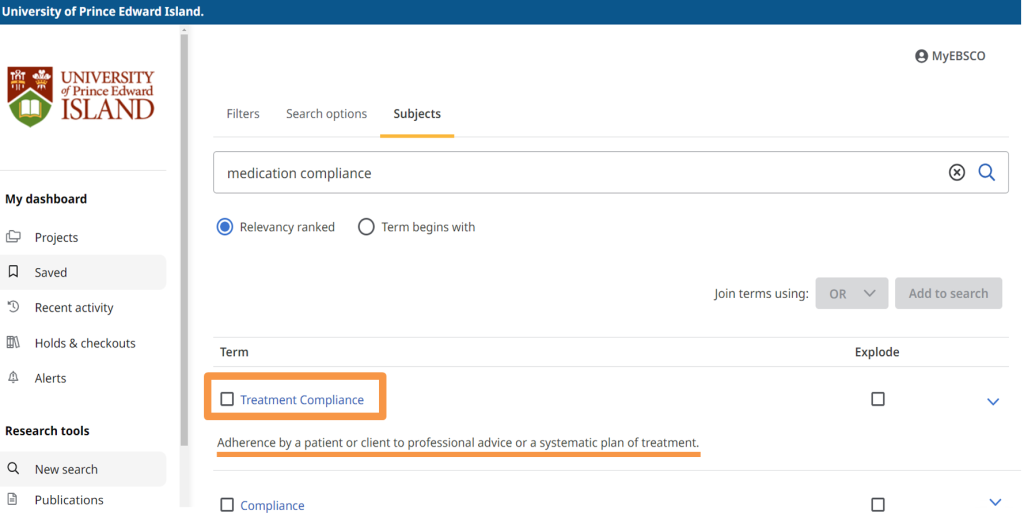
Since I want to use this as an alternative for “medication compliance,” I’ll add it on the same row, again using OR. I use the code SU to tell PsycInfo to only look for that phrase in the article’s subject terms.
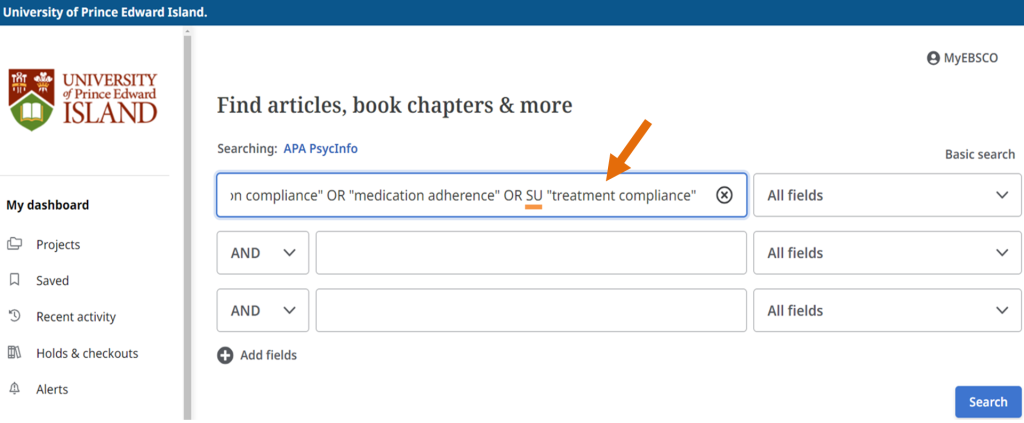
Now, I need to add terms for depression and CBT to my search. When I search for depression in the Subjects tab, I see that PsycINFO uses “Major Depression” for the clinical disorder and “Depression (Emotion)” for mild, non-clinical depression.

I am interested in clinical depression, so I’ll add “Major Depression” as my next search element, again including the SU code since I found it in the Subjects list.
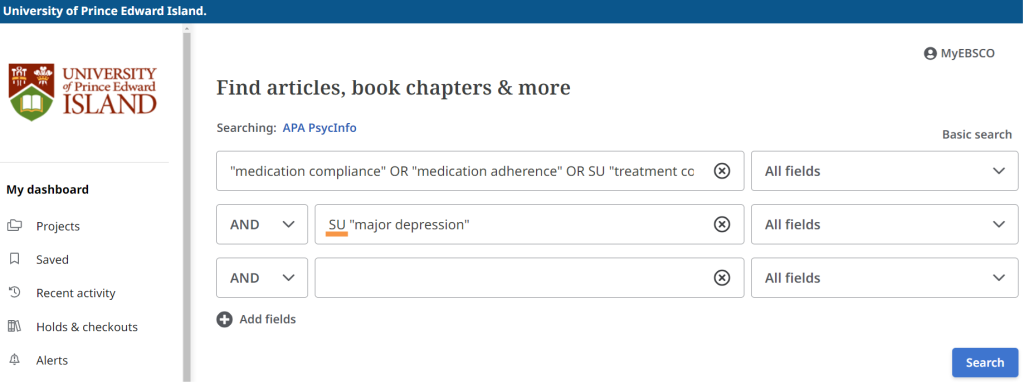
Similarly, searching for “cognitive behavioural therapy” in the Subjects tab finds the official subject term, Cognitive Behavior Therapy.
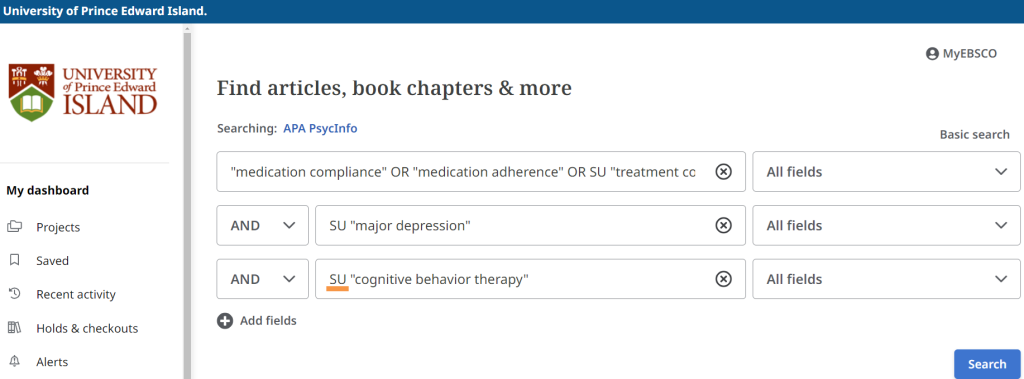
Before I start my search, I can add any synonyms or acronyms that I think authors might also be using. For medication or treatment compliance, I’m also going to add “patient compliance.” For “major depression,” I’m going to add “depressive disorder,” and for “cognitive behavior therapy,” I’m going to add the acronym CBT. These aren’t official subject terms, so I won’t add the SU indicator.

There are 43 results. I can see the title of each result, the list of subject terms related to the result, the journal and publication date, the authors, and the very beginning of the abstract.
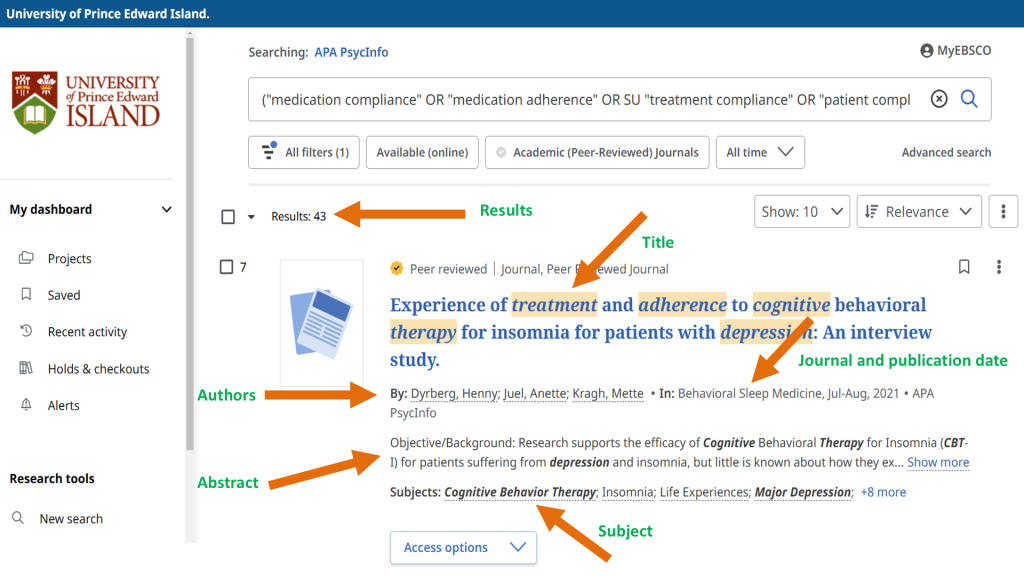
The “show more” and “plus more” links show me more of the abstract and all of the subject terms.
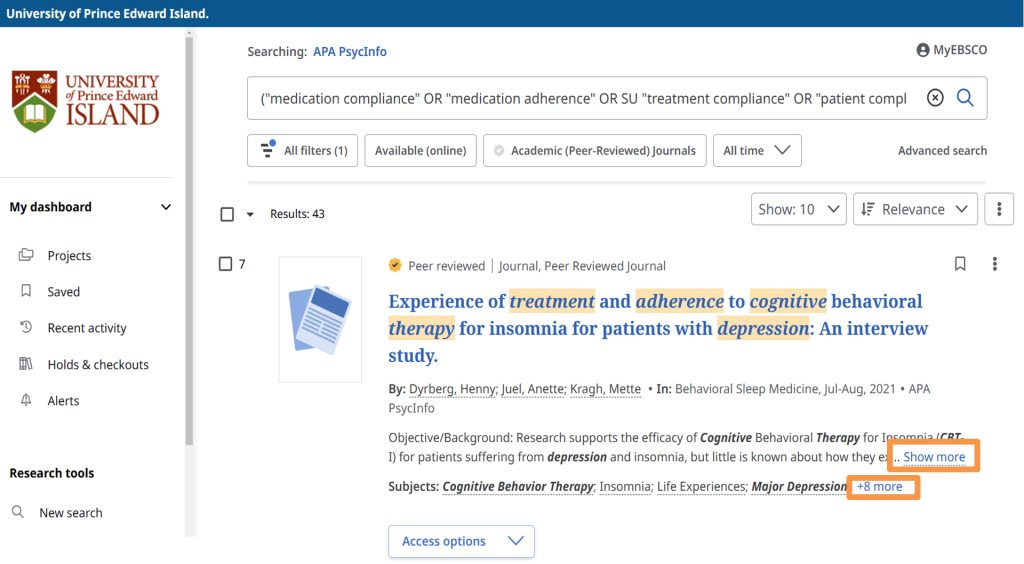
If I see words or phrases in the title, subject terms, or abstract that I want to add to my search terms, I can click “Advanced Search” to get back to my original search boxes.
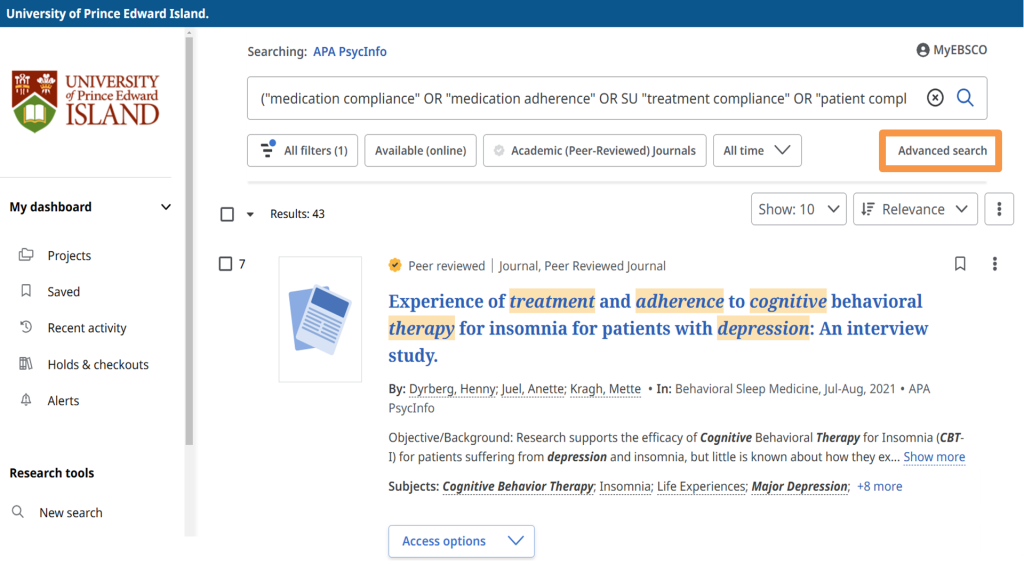
The buttons under the search box let me filter my search results.

For example, I can choose only the results that are peer-reviewed journal articles. Under the “All time” button, I can choose to only see results from the past 12 months, 5 years, or 10 years,

but I can also use the “All filters” button to open the filters window and set a more specific time period in the “Publication Date” section. I’ll set a custom date range for anything from January 1, 2017, through December 31, 2025. (Some journal articles get published online with dates in the future, based on when they’ll be published in print!)
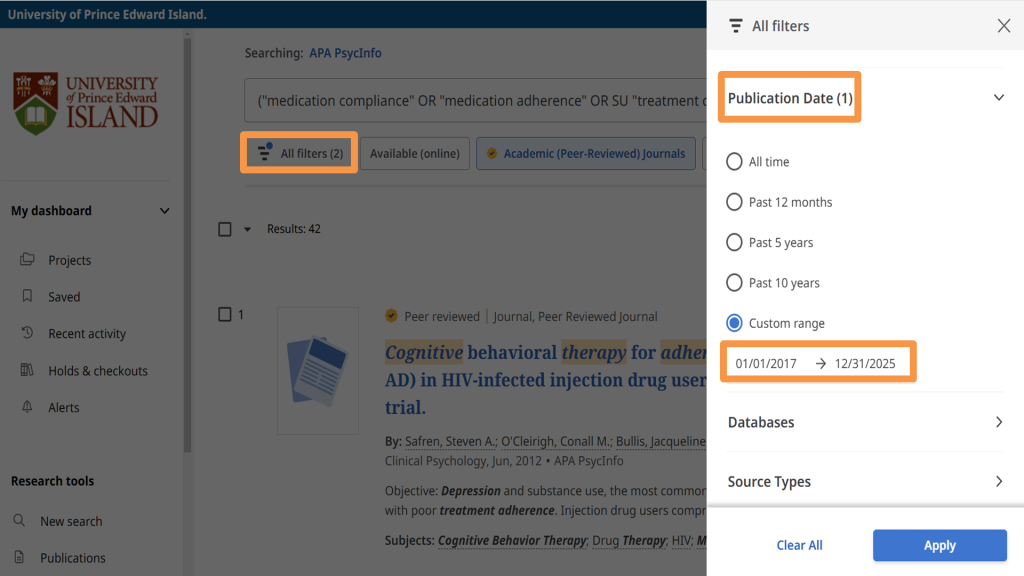
Now, I only have 11 results. They’re arranged by relevance, or how well they match my search terms, so I won’t necessarily see the newest thing at the top. Because I’ve set the date range I need for my assignment, I know that all of the results are within the time frame I need.
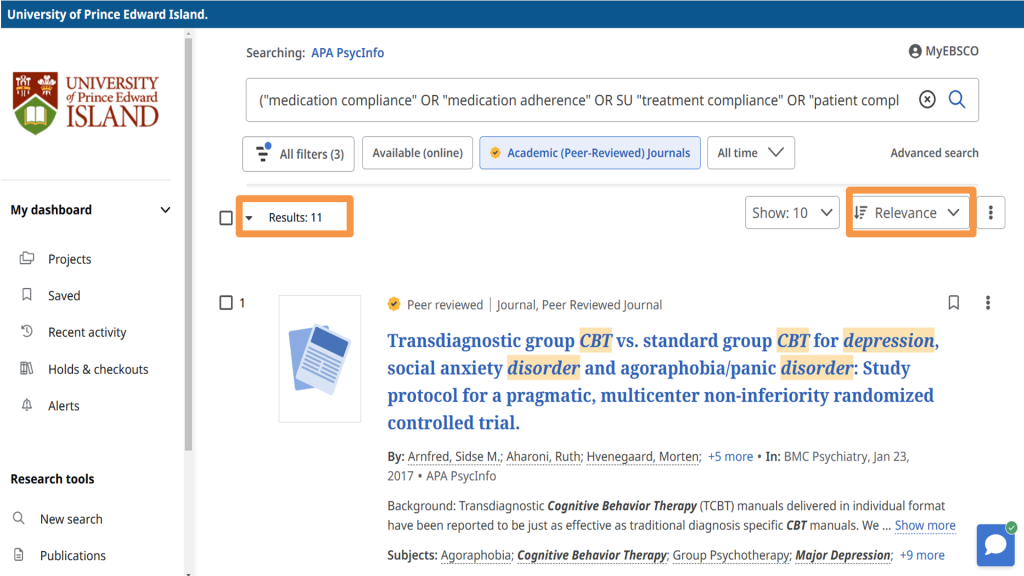
If I want to know more about a specific search result, I can click on the title.
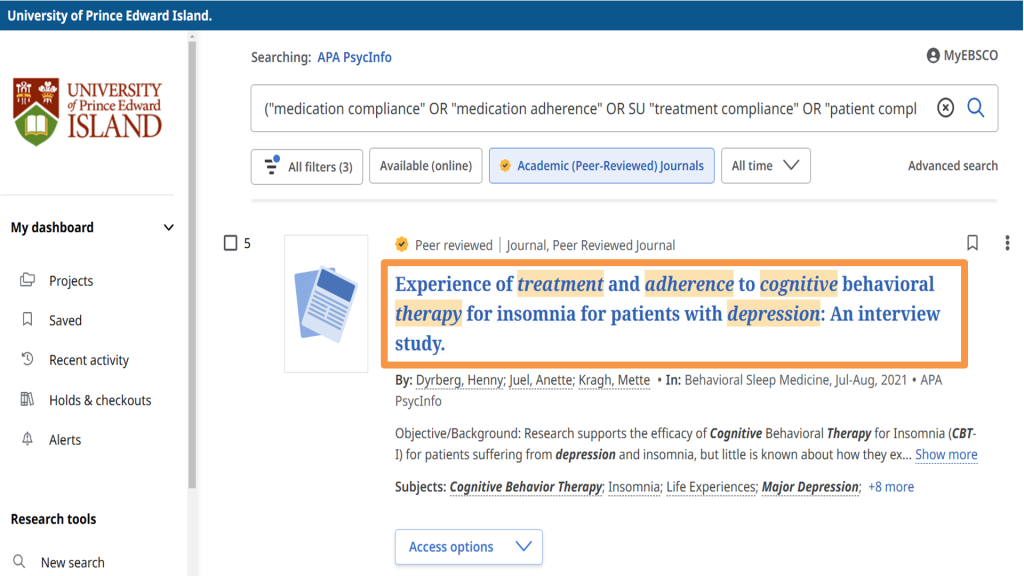
This will take me to a page with the full abstract and more information about the article, including keywords,

subject terms, population groups, and tests or measures used.
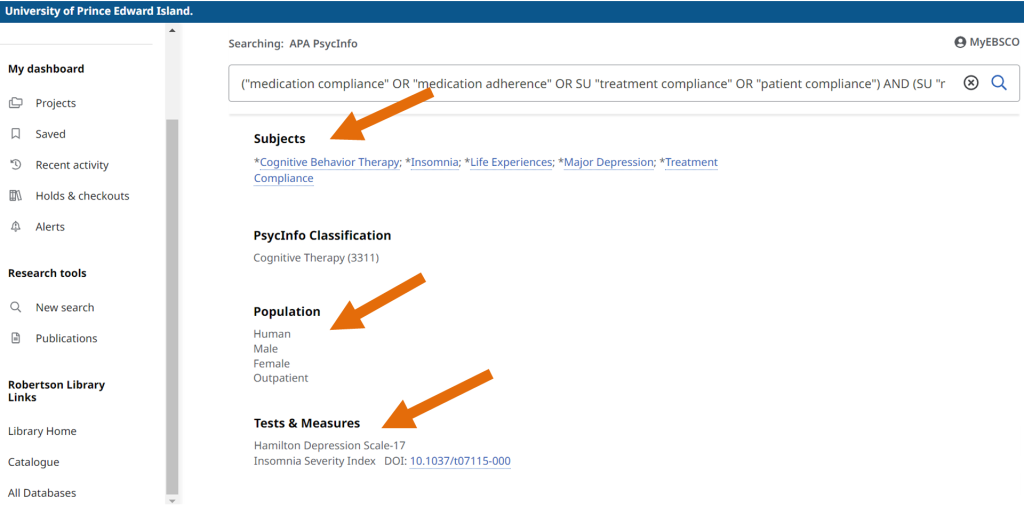
In the Access Options dropdown, the Check@UPEI (Full Text Finder) link should take me to the full text of this article. So will a PDF link or an “Online full text” link. The PDF and “Online full text” links will open in the current tab, while other links will open in a new tab or window.
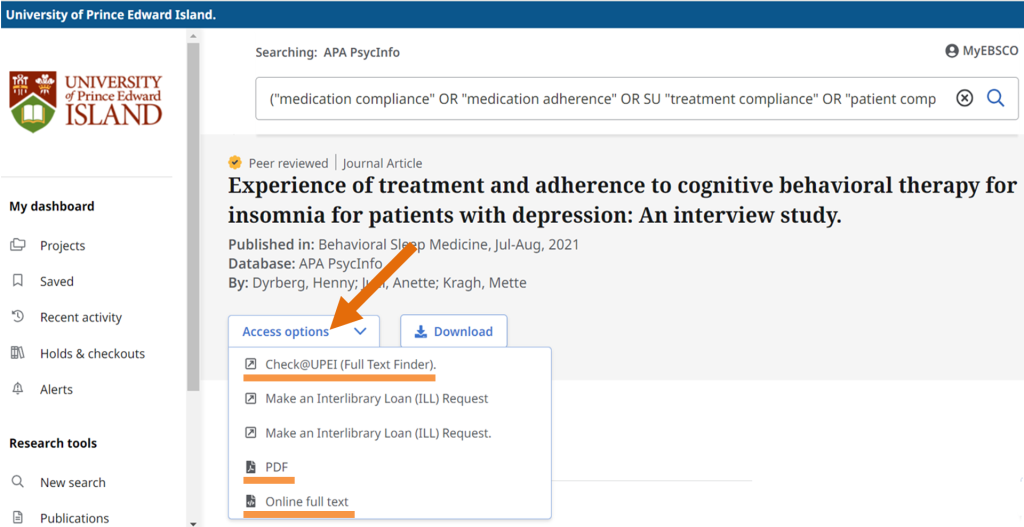
If an item only has the “Make an Interlibrary Loan (ILL) Request” link, that means that we don’t have immediate access to this article, but we may be able to borrow a copy for you from another library.
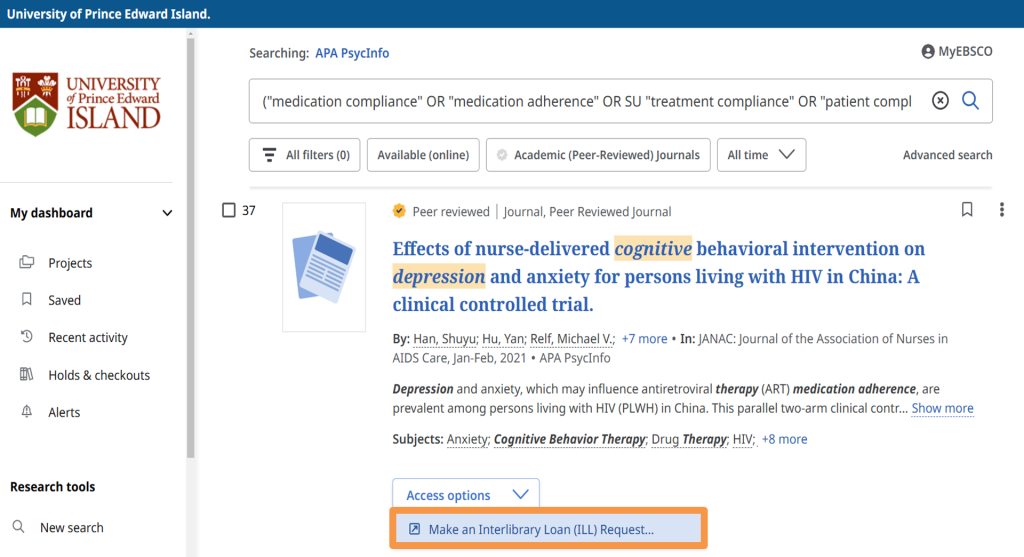
To learn more about Interlibrary Loan, you can watch our Interlibrary Loan tutorial or go to library.upei.ca/ill
If you need more help, ask us at the service desk, phone us at (902)-566-0583, send an email to reference@upei.ca, or use the chat tool on the library website.
If you are taking a psychology course, you can also find the contact information for the psychology librarian on the library homepage.
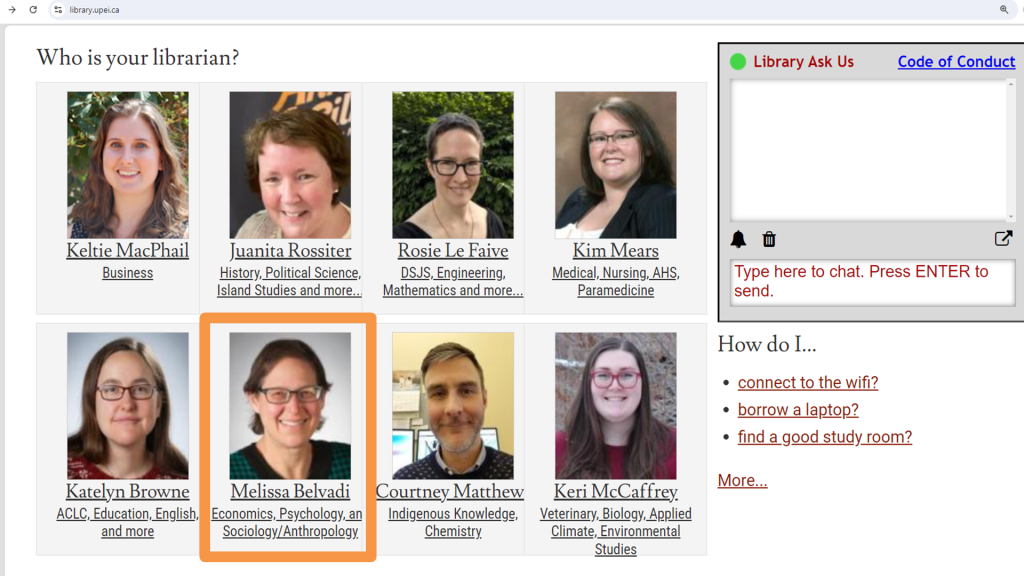
We are here for you.
Note: A video version of this tutorial is also available.